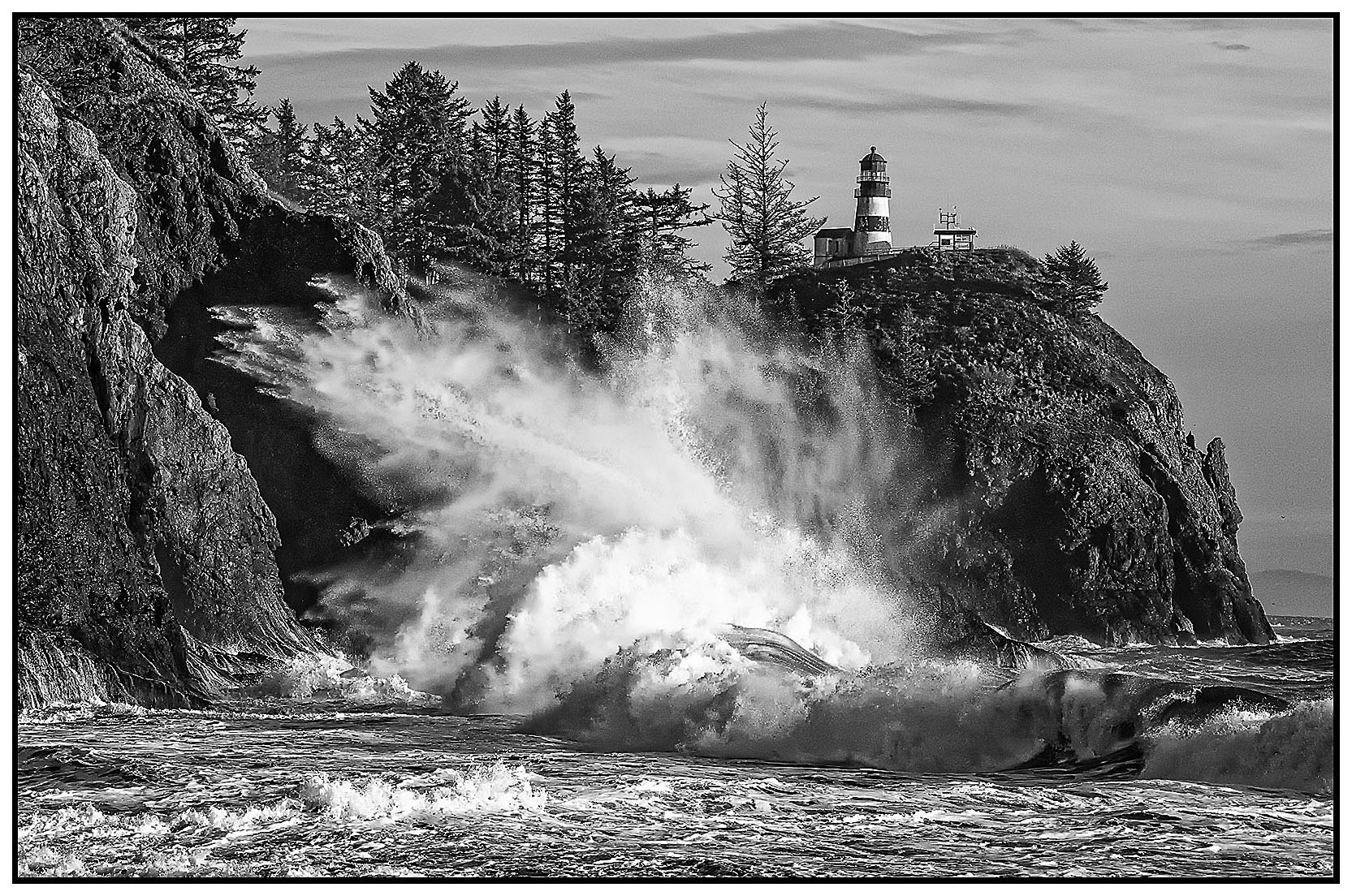Are you looking for winter-time excitement at the Coast? You may find huge crashing waves at Cape Disappointment State Park depending on the weather, tide conditions and wave height. During other times of the year, the Park and surrounding communities offer many recreational and educational options. Photographing Cape Disappointment State Park means lighthouses, history, wildlife, and dramatic waves.
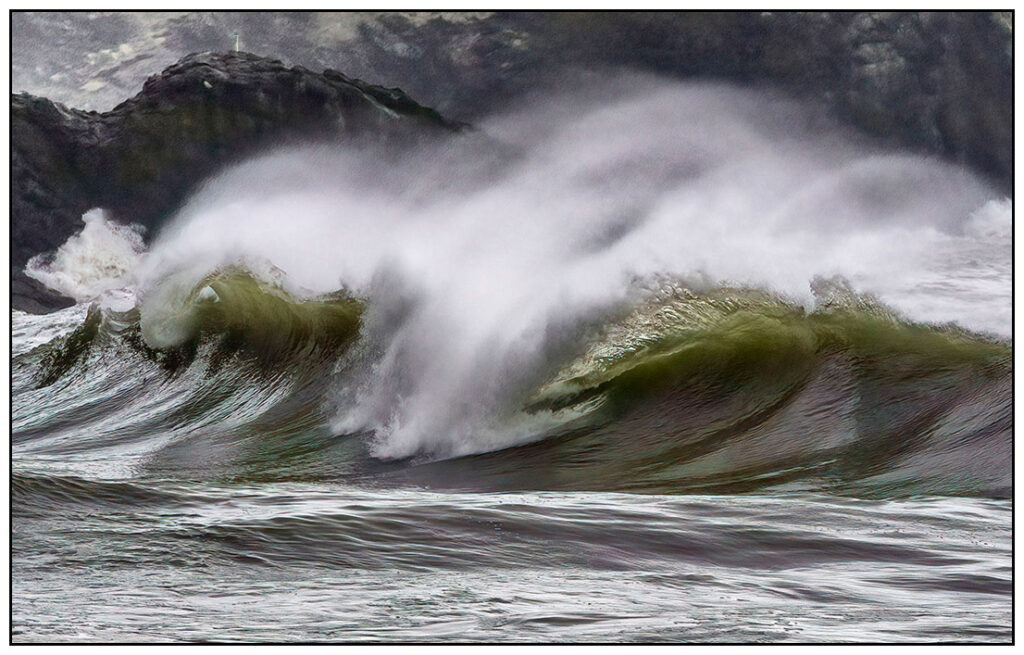
(Cape Disappointment State Park, Photo by Adrianne Brockman)
Cape Disappointment State Park
Cape Disappointment State Park is located at the confluence of the Pacific Ocean and the Columbia River on the Long Beach Peninsula in the State of Washington. This article will focus on the winter time scenic and photographic opportunities. During other times of the year, the Long Beach Peninsula is popular with photographers, surfers, campers, hikers, fisherpersons, birders, wildlife enthusiasts and persons interested in the history of the Northwest.
Two Lighthouses, Camping, and More
Cape Disappointment State Park is 2000 acres in size. The Washington State Parks Department has a very informative website regarding the Park, and all it has to offer. In summary: the Park has two historic lighthouses; many different types of campsite alternatives with restroom facilities; and, for day use, it has unsheltered picnic tables with restrooms. There is a boat ramp and dock, and an opportunity for activities such as: clamming, crabbing and fishing; birding; and concerts; as well as, photographic opportunities.
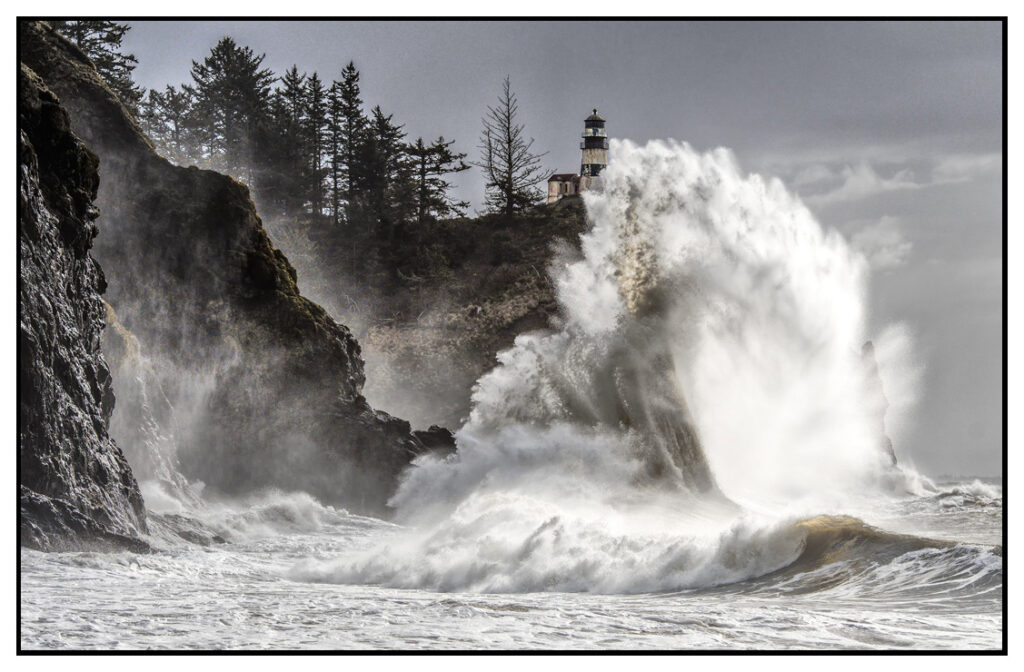
(Cape Disappointment State Park, Photo by Adrianne Brockman)
Dramatic Winter Scenery
During the stormy winter months, a big attraction is the very active Ocean and frequent huge crashing waves. In the Park, the shoreline near the Waikiki Beach area is often packed with photographers with their cameras aimed at the waves and at the lighthouse. Many photographers use two cameras with each one on a tripod. One camera is use to photograph a big incoming wave up-close and the other, to photograph the huge waves below the Lighthouse. The background for the photographic images is the surrounding nearly 200 foot high dark rock cliffs and the Cape Disappointment Lighthouse.
Cape Disappointment Lighthouse: The Backdrop
The Cape Disappointment Lighthouse is 53 feet tall, and the distance from the shoreline below the lighthouse to the lighthouse light is about 220 feet. The breaking waves can spray to heights that obscure the view of the lighthouse. From time to time, one can see a big ship in the distance leaving or headed for a harbor at Longview or Vancouver, Washington or Portland, Oregon. One hears the continuous sound of clicking camera shutters and crashing waves. It is dramatic, mesmerizing and relaxing.
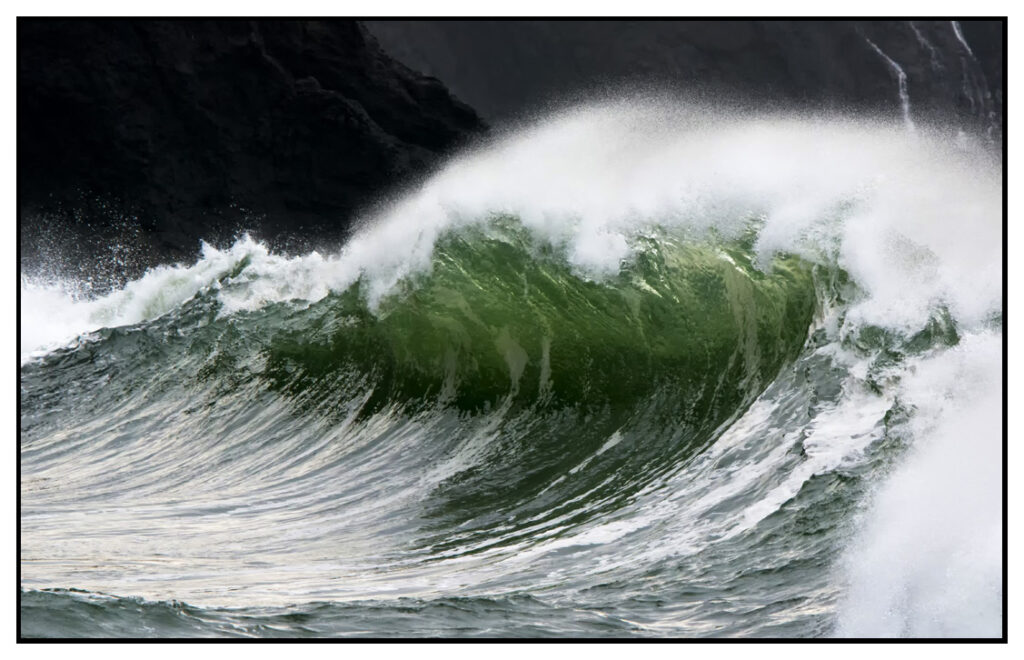
(Cape Disappointment State Park, Photo by Adrianne Brockman)
Planning Your Adventure: Check the Weather Forecast
The question is: How do you know when the viewing will be exceptional. Well, that is not easy! Starting in October, those interested in viewing the huge waves should watch on a daily basis the information that is available about the weather, tides and waves.
First, consult the weather forecast for the Long Beach Peninsula as well as the few weather cams in the area. Generally, some part of each day is free from rain even if rain is forecasted.
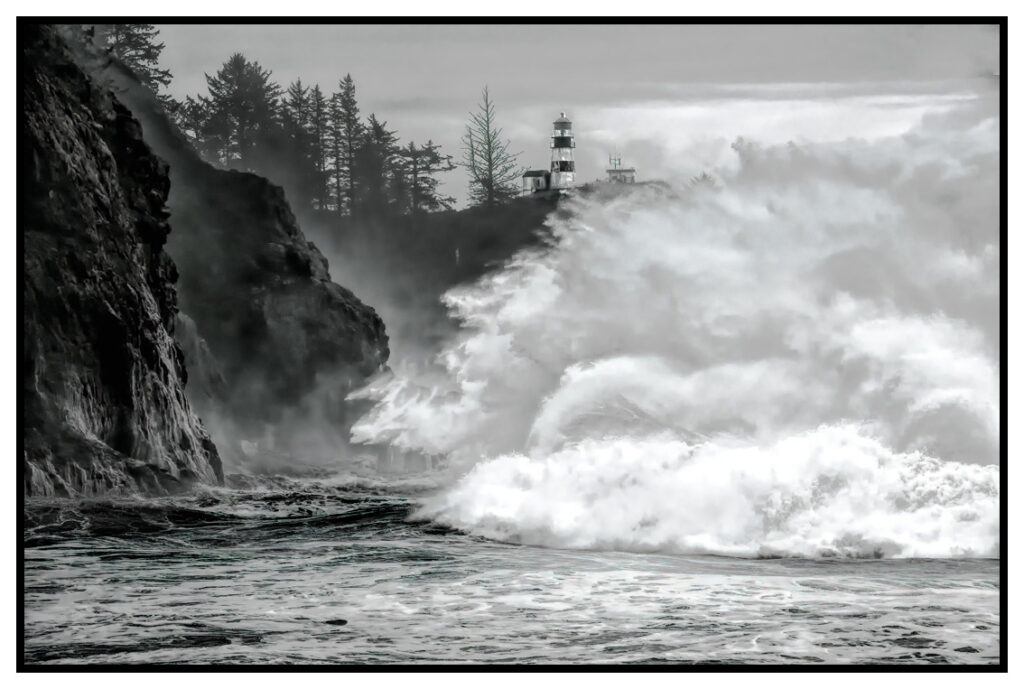
(Photo of Cape Disappointment by Adrianne Brockman)
Check the Tide Tables and Surf Reports
Second, consult the website, Surf-Reports.com, and examine the charts applicable to Long Beach, Washington. Experience is that waves 14 feet and taller are interesting and as the height increases the waves become more dramatic. Of course, the bigger the better but there may come a point when the Park is closed because of danger from flooding and moving logs and debris. Therefore, it is advisable to place a call to the Park and ask a Ranger if the Park will be open.
Third, you will want to start viewing the waves at least two hours before high tide so consult the tide charts for the time of the high tide. Be sure it is all taking place during strong daylight as if you are photographing, you will need high shutter speeds.
Fourth, other factors to consider on the Magicseaweed charts are how far apart the waves will be and the wind strength. The closer together the waves are, the more they crash and the bigger and taller the height. Wind assists also with the drama.
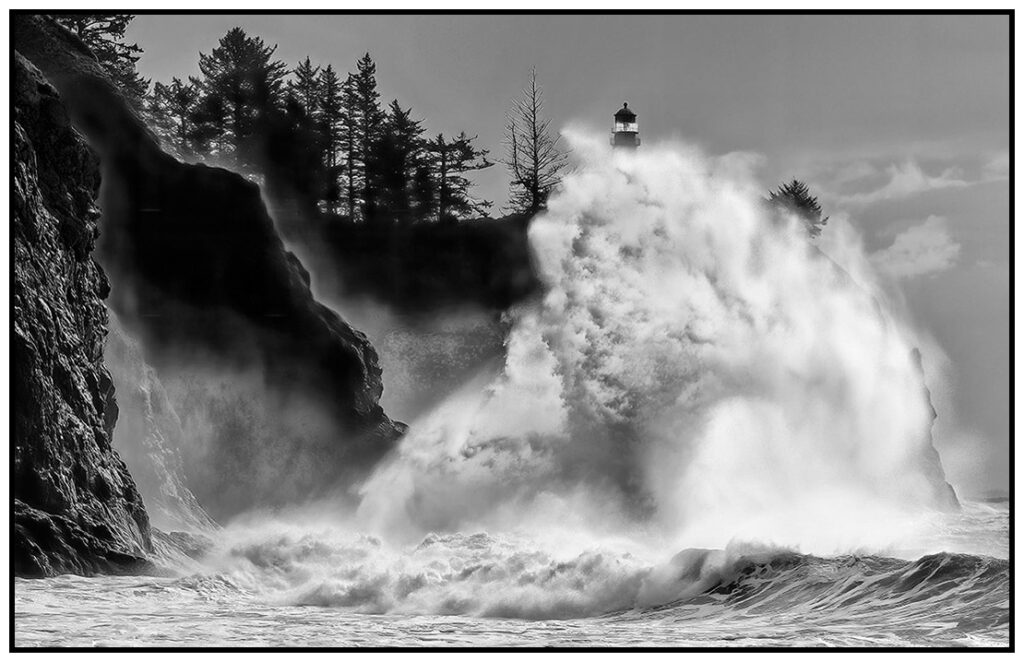
(Cape Disappointment State Park, Photo by Adrianne Brockman)
What to Wear While Photographing Cape Disappointment
The next question is: What should one wear? If you plan to photograph the Washington coast, it’s best to dress in layers much of the year. Include gloves and a hat as well as supportive boots that will keep your feet dry and warm. It is advisable to wear a light rain/windbreaker with a hood over your layers of clothing as well as to have a rain cover for each camera and a towel. Be sure to have a lens shade for your lens to keep the mist off or it. This area is said to be the foggiest place in the World. If you plan to spend the day there, take a little chair, sandwich and water. There is no food on site during the winter months. You would not want to drive off site and lose your parking space. Parking is limited, and it is a problem.
Be Safe and a Key to a Successful Adventure
Last, be safe and do research before you embark on this adventure! First and foremost, be very cautious near the logs. The logs do move and can be dangerous when the Ocean is very active. Also, the success of your adventure will depend on the amount of research you do. If you are interested in the history, read about the history of the lighthouses and about the early explorers. If your interest is in wildlife, read about what you might see and where, and study how to handle a dangerous situation such as meeting a cougar face to face.
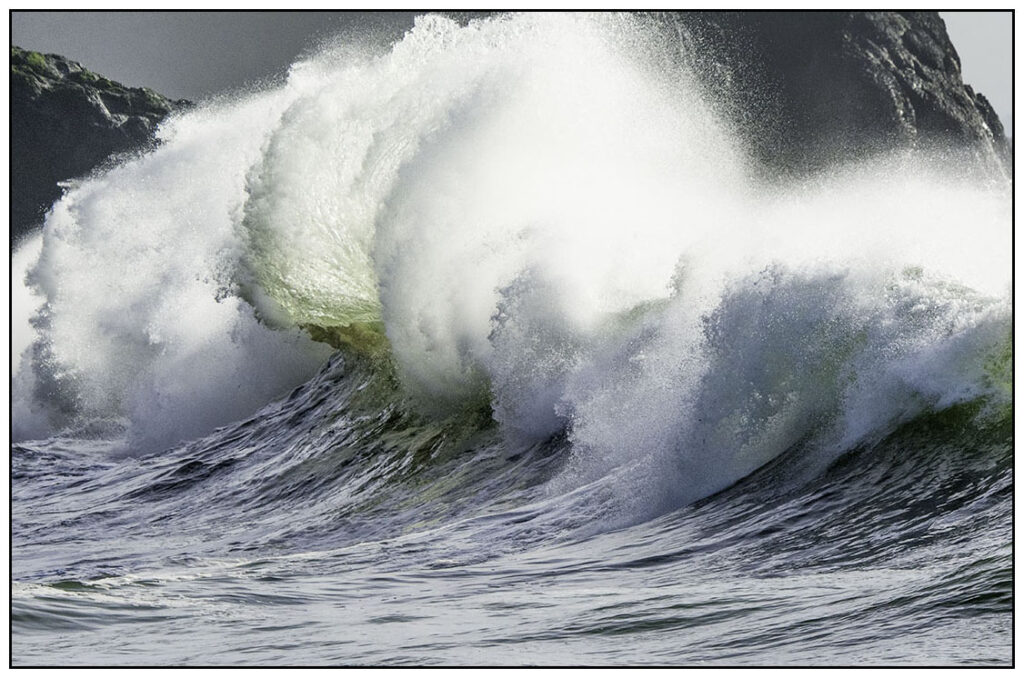
(Cape Disappointment State Park, Photo by Adrianne Brockman)
More About Long Beach Peninsula
For other recreational and educational opportunities in addition to photographing Cape Disappointment, consult the “Events Calendar” and “Things to Do List” on the Long Beach Peninsula website. In close proximity to Cape Disappointment State Park, the Interpretative Center tells the story of the explorers, Lewis and Clark. From the Center, there is a trail to the Lighthouse. And some distance away is the North Head Lighthouse which offers tours.
Both Lighthouses are steeped in history, and there are historic homes. There are additional educational opportunities provided by a number of museums such as the Kite Museum, the Cranberry Museum and cranberry bogs, as well as a number of local history museums. Some distance away from the Park but on the Peninsula, are wildlife refuges: Willapa Bay; Leadbetter Point; and Beards Hollow.
There are 200 to 300 species of birds depending on your source. Within the refuges, there are many wild animals so be aware. There is also whale watching. In addition, there are the usual beach oriented activities such as beach combing, kite flying, horseback riding, golfing, bicycle riding and fishing.
Lighthouses, History, Wildlife and Dramatic Waves
Happy and safe travels photographing Cape Disappointment!
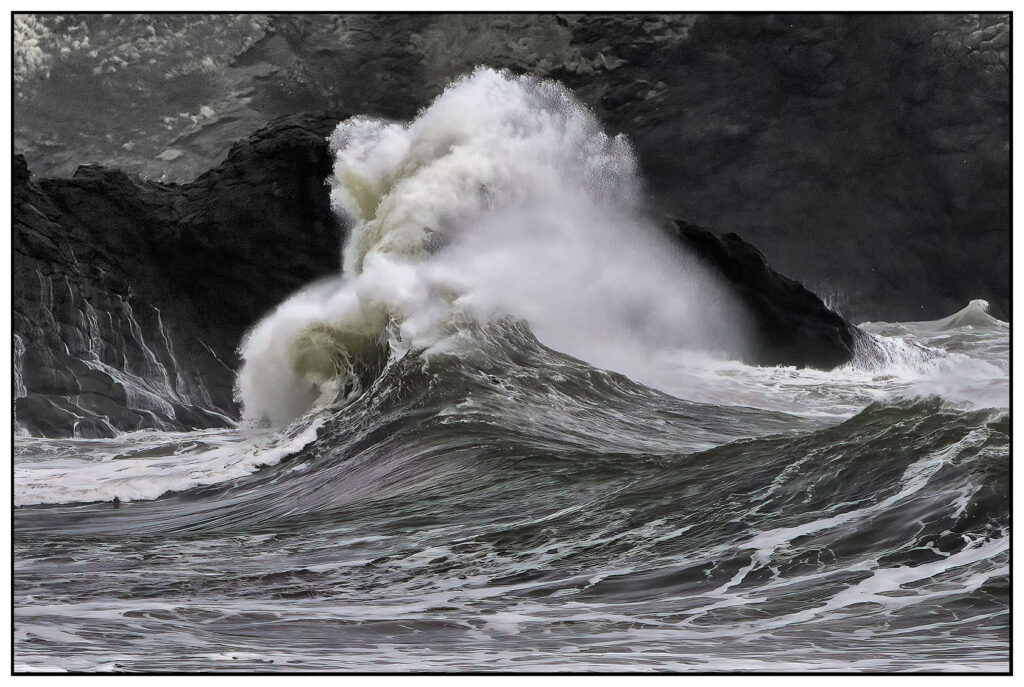
(Photo of Cape Disappointment by Adrianne Brockman)
For More:
- We love Washington’s Long Beach Peninsula; explore Visit Long Beach for all you need to know. (Note: There is a day use fee at the Park unless you have a Washington State Discovery Pass.)
- On our site: Crabbing with CoHo Charters in Ilwaco, Washington
- On our site: We’ve explored quite a bit ourselves and have more on Long Beach Peninsula and the surrounding area.
- Also on our site: Take a look at more of Adrianne Brockman’s articles, featuring her photography and photography tips.
– All photos by Adrianne Brockman.

